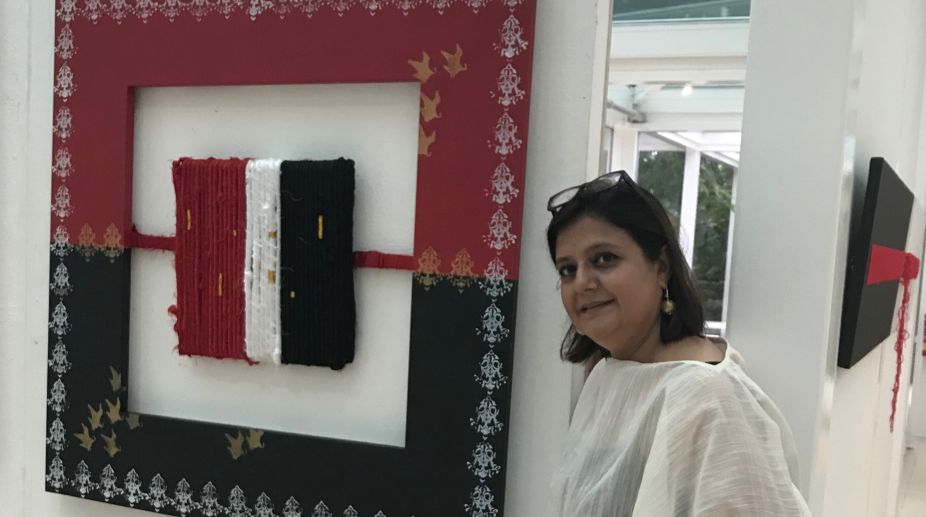PM Modi witnesses presentation of Ramayana in Brazil, hails Jonas Masetti for popularising Indian culture globally
The PM met Jonas Masetti and team after seeing their performance of the Ramayana in Sanskrit.
The idea is to question one’s innermost desire and believe in ourselves as women, says Sunaina Bhalla on her work.

Artist Sunaina Bhalla
Her work revolves around the repetitive and ritualistic nature of gestures and their traces. She explores the transformative effects of the deliberate infliction of pain on the human body during the curative process of alleviating disease and decay. This time, she will be deconstructing 16 key women characters in the Ramayana and the Mahabharata, with the focus on three colours representing three emotions that are experienced in these epics. Sunaina Bhalla, a contemporary artist of Indian origin, talks about her belief and latest work to thestatesman.com. Excerpts:
Why is the focus on the 16 women in the Ramayana and the Mahabharata?
These two epics in Hindu Mythology carry a lot of weight and reverence in our society. Currently, I find that a lot needs to be revisited and understood regarding the status of women. I do believe the interpretation of these two epics needs to be studied in depth by all of us. My attempt here is to bring out the similarities and differences between each of these women and our modern Indian woman, including me.
Advertisement
What is that one thing common about them, according to you?
Surprisingly, I found that in the Mahabharata for example, there were a great many strong women who were in positions of power like Satyavati, Amba and of course Draupadi and Kunti. In spite of the patriarchal society they belonged to, they wielded a lot of power. In contrast to the Mahabharata, in the Ramayana we find the main character of Sita to be exploited time and again and submitting quietly to the torture she is put through. Their fortitude and strength is the commonality I find in all of them. I want this trait to be highlighted rather than the molestation of Draupadi or the strength and courage of the Pandavas, all of whom failed their wife in the game of dice.
What about these powerful women of strength inspires you?
I am inspired by the attempt some of these women made, overtly as well as quietly, in going after what they wanted and desired. The sexual desire of Surpanakha for Laxman became the central cause of war and I am questioning the basic premise of the society that denies a woman the right to openly pursue a man she desires. Hidimba quietly loved Bhima, gave him a son who would one day win a war,but asked for nothing in return. The selflessness of this forest woman is inspirational.
What is your definition of today’s modern Indian women?
Today I find that women are much more aware of their rights and are not willing to submit to injustice. They can question their circumstances, are economically independent and think for themselves. However, we are still very far from a society where the two genders are equal.
Do you find traces of the 16 women in today’s modern Indian women?
Yes I absolutely do. In fact within my close circle of women I find that each one,including me, having some traits that these 16 women have. The mirror series that I have done for this show speaks about the diverse moods and strengths of a woman. One could be a Kunti one morning and transform into an Amba by the end of the day. The idea is to question one’s innermost desire and believe in ourselves as women.
Using the three symbolic colours – red, black and white, and beautifully weaving her believe in her art, Sunaina highlights the power and strength of the key women in the Indian mythology in her work to be showcased at “16”, a solo exhibition, on November 16-25 at Art Consult, Kauz Khas Village, New Delhi.
Advertisement